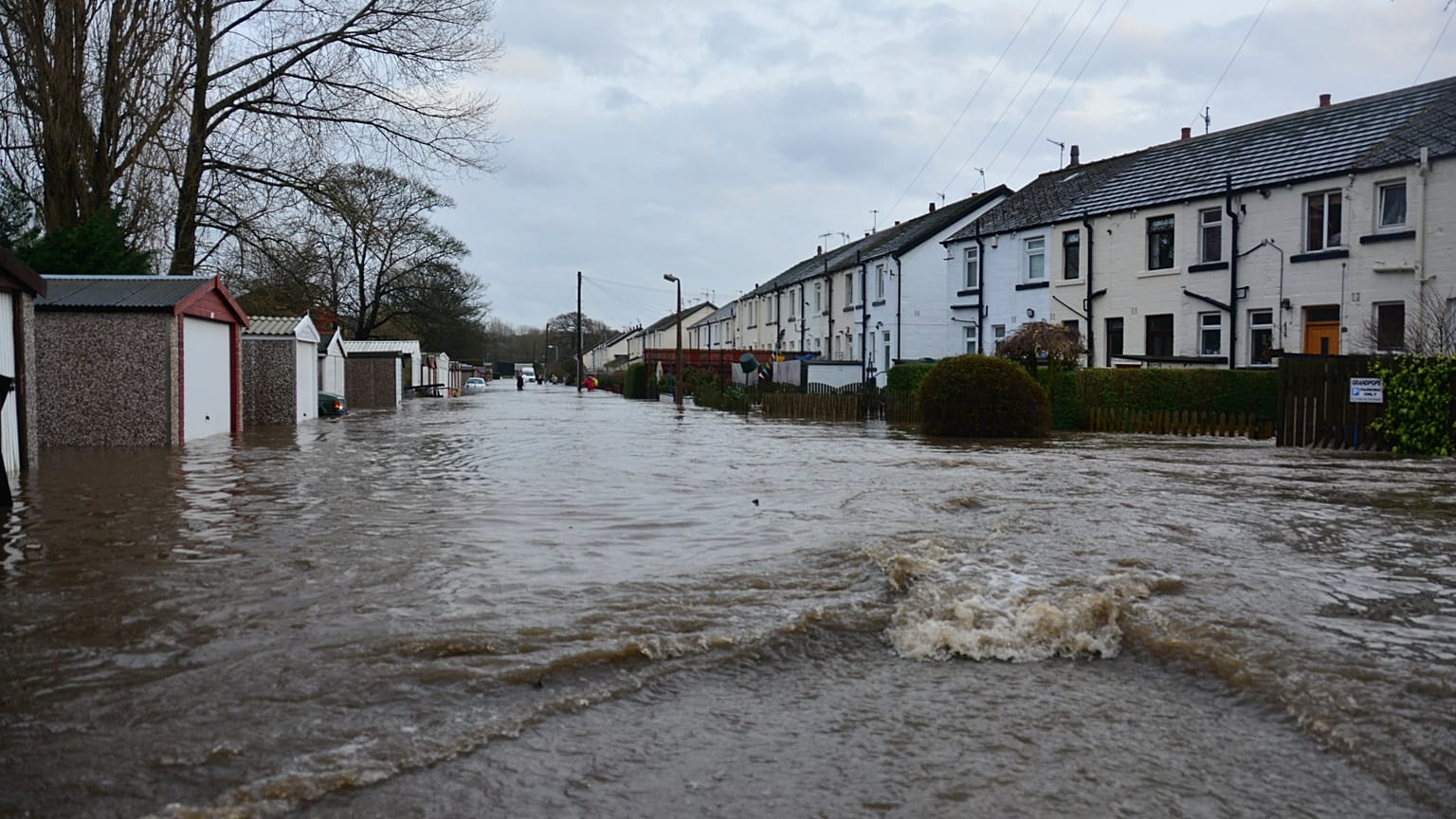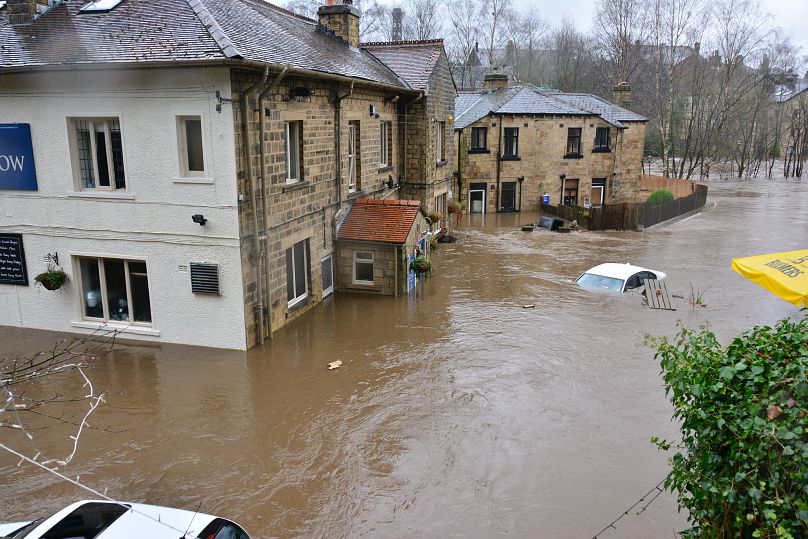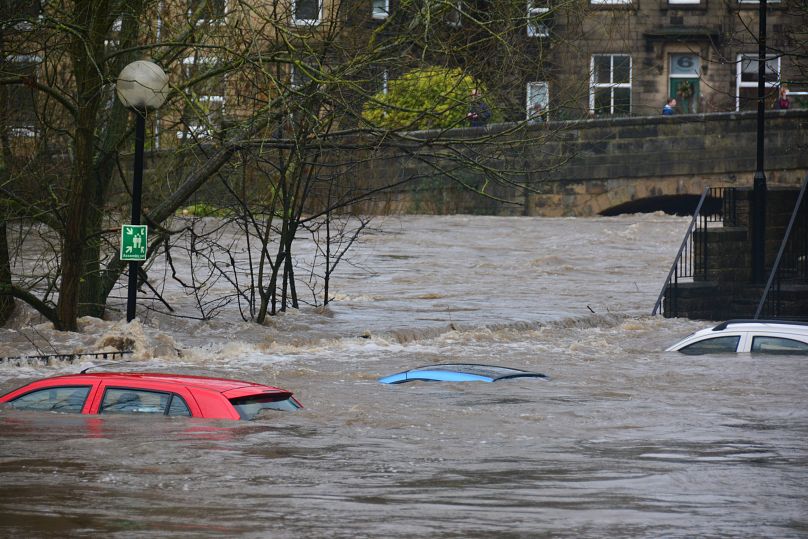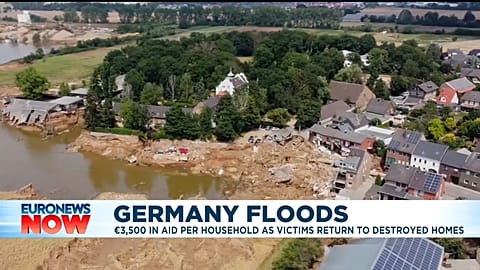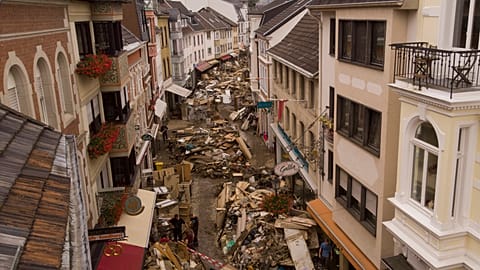As floods cause untold damage to many parts of Europe, here’s how you can protect yourself, and your home, from unexpected floods.
From Germany to Italy and the UK, flash floods have been causing havoc across many major towns and cities in Europe over the past few weeks.
Climate change is increasing the frequency of flooding around the world and local river banks are struggling to contain the large amounts of water that fall during rainy periods. It means that the risk of this natural hazard has increased and it is more important than ever to have precautions in place.
As governments and local authorities across Europe look for innovative ways to prevent citywide flooding in their countries, there is now a more proactive effort to make sure that communities remain safe and secure in the face of deadly floods.
When floods occur, water damage can happen very quickly with little warning causing long-term damage to your home.
To prepare you for the worst, we’ve put together a list of the measures you can put in place to prepare yourself and your homes in the event of a flood. While these things may be a little costly, they will ultimately save you and your household from a far more expensive repair job.
What equipment should I keep at home?
When a flood occurs, there is often little time to put together an emergency supply kit. Flood water starts rising very quickly and if levels get too high, you may not have access to certain parts of your house or you may need to evacuate straight away.
That is why it’s important to have an emergency kit filled with essential supplies that you may need for yourself and any children or pets that live with you. It is also important that this kit is stored at least six inches off the ground to prevent floodwater from damaging its contents.
A flood survival kit should contain several essentials including:
Important legal documents and identification - this includes passports, driving licenses, insurance documents and any vital healthcare documents
First aid kit and necessary medications - a first aid kit is something you should always have on hand, as well as spare packs of any prescription medication that you use
Money/bank cards - it is a good idea to have a reasonable amount of money available for supplies
Portable lighting and power - including torches, matches, portable power packs and batteries in case the electricity gets cut out
Spare food and drink supplies - Ideally, there should be about two to three days worth of food that requires little preparation
Important pet supplies - make sure to set aside some spare food, medication and other essential supplies if you own pets
Keys - to prevent opportunistic burglaries, it is important to carry keys to your property so that you can lock it up before you leave
Spare clothing and blankets - clean and dry clothing is essential in case you lose power in your home
Hygiene/sanitary equipment - includes hand sanitiser and anti-bacterial wipes
Mini wind-up radio - to follow local news and weather updates in case power is lost
How can I prepare my home in the event of flooding?
There are also structural changes you can make to your property that will make it secure in the event of flooding. A lot of these preventative measures require specialist tradespeople but will pay off in the protection they provide your home.
Roof inspections
You can hire a roofer to inspect your roof to make sure there are no leaks that can lead to long-term rainwater damage. It is also a good idea to check your gutters to make sure that they are channelling rainwater away safely.
Install non-return valves
During a flood, the drains outside can quickly begin to overflow. This can cause floodwater contaminated with sewage, chemicals and other waste to come back up through your drains, entering your home through toilets and sinks. A plumber can install non-return valves to drains and pipes ensuring water flows one way, keeping it out of your house.
Flood-resistant doors and windows
Having doors and window frames with gaps or rotting wood means that floodwater is more likely to get in. A door and window fitter can replace non-watertight openings with flood-resistant uPVC models to reduce this risk.
Sandbags
If replacing your doors and windows is not an option for you, then it may be worth investing in some emergency sandbags that can be used to stop any residual water from getting inside your home.
Move electrical items higher
It is common knowledge that water and electricity don’t mix, so moving electrical appliances and fixtures up from the floor is important to stop floodwater from damaging them. An electrician can also raise sockets so that they are less likely to be impacted by low-level flooding.
Fixing a flood-damaged home can be a costly expenditure and can often take months to complete. While these protective measures can be a little expensive, it is better to make sure your home is as flood-resistant as possible now than to face property damage from floodwaters in the future.
How to check whether I live in a flood risk area?
Before you begin making any flood preparations for your home, it is a good idea to check whether your property is situated in an area with high flood risk. This gives you a better idea of how likely you are to experience serious problems and will help you figure out what kind of protection you need for your home.
Depending on what country you live in, you can usually find out whether you live in a flood risk zone on government websites. In some countries (such as the UK), you can find out whether your property has been affected in the past by contacting your national environment agency.
It is also a good idea to check government websites to find out more information on emergency numbers that you can contact in the event that your area does become flooded.
Flood Insurance: Should I get it?
Flood insurance is not something that many would automatically consider. If you live in an area that is vulnerable to floodings, then it may be worth purchasing insurance for your property.
In some countries, standard home insurance policies include flood cover. This means that if damage occurs due to an external source (such as a river or canal bursting its banks, storms and high tides, or heavy rainfall), then your property will be covered. Flood insurance tends to cover both structural damages to your home as well as to any belongings within the property.
However, it is important to double-check what your policy does and doesn’t cover.
In some cases, policies will not cover flood damage if your home is located in a ‘flood risk area’. This could be because it is situated in a high-risk zone, or because your property has experienced flooding in the past.
Insurance companies may exclude flood cover or charge a very high premium to include this kind of protection. Some policies may also exclude groundwater flooding from your cover, so it’s crucial to check.















